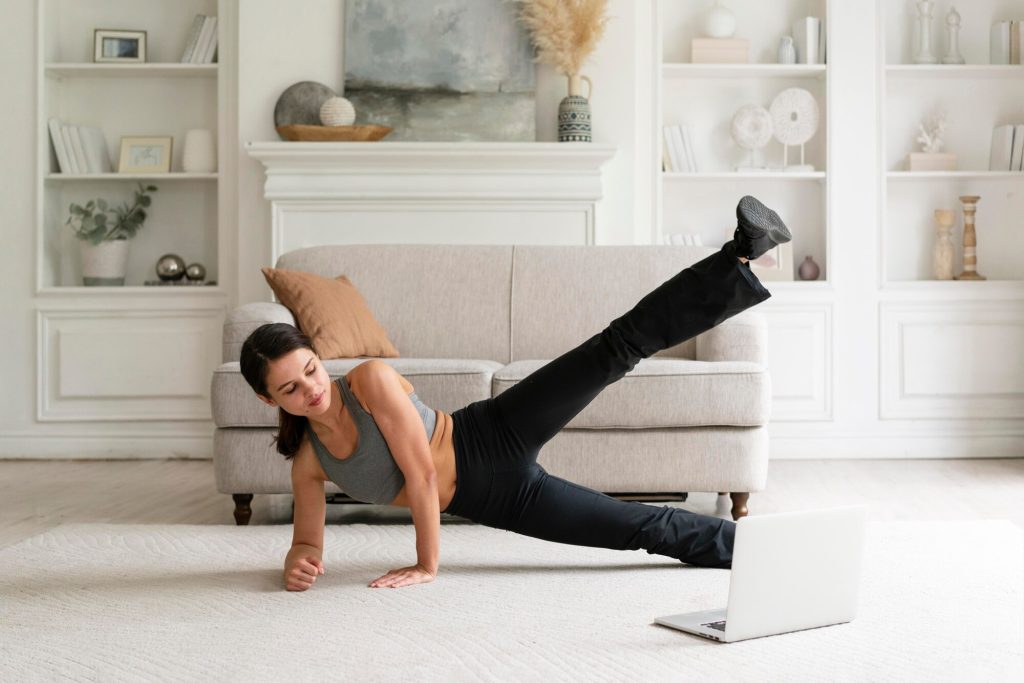Develop Core Strength Without Weights: A Comprehensive Guide
Building a powerful core is essential for overall fitness, posture, and injury prevention, and you can achieve this without any weights. Focusing on bodyweight exercises and mindful movement techniques allows you to develop core strength naturally and sustainably. In today’s fitness landscape, more people are turning to methods that require little to no equipment while still offering substantial benefits. This guide explores how you can effectively develop core strength without weights and outlines practical exercises and strategies to help you reach your fitness goals.
Understanding the Importance of Core Strength
The core is more than just the abdominal muscles; it includes the obliques, lower back, hip flexors, and glutes. A strong core provides stability for almost every movement, whether you’re performing daily activities or engaging in strenuous workouts. When your core is strong, you improve balance, reduce the risk of injury, and enhance athletic performance. Moreover, a robust core supports better posture, which can help alleviate back pain and improve overall body alignment.
Developing core strength without weights relies on harnessing your body’s natural resistance and gravity. By performing exercises that challenge your stability and balance, you not only strengthen your muscles but also engage smaller, often overlooked stabilizing muscles. This holistic approach leads to improved coordination and a more resilient core, essential for both everyday tasks and high-intensity activities.
Effective Bodyweight Exercises for Core Strength
There are numerous exercises that focus on the core and can be performed without any additional equipment. Here are some proven methods:
-
Planks: One of the most popular core exercises, the plank targets multiple muscle groups simultaneously. Whether you opt for a standard forearm plank or a side plank, maintaining a straight line from head to toe forces your core to engage and support your body weight.
-
Mountain Climbers: This dynamic exercise not only works your core but also increases your heart rate, offering a blend of strength and cardio benefits. By alternating your knees towards your chest while in a plank position, you engage your abdominal muscles and improve overall endurance.
-
Bicycle Crunches: Bicycle crunches target both the rectus abdominis and the obliques. By simulating a pedaling motion, you actively work multiple areas of the core, making it an effective exercise for building strength and stability.
-
Leg Raises: Performing leg raises requires you to lift your legs against gravity, challenging the lower abdominal muscles. Lying on your back, slowly raise your legs to a 90-degree angle and lower them back down without touching the floor to maximize the exercise’s effectiveness.
-
Bird Dogs: This exercise emphasizes balance and coordination. While on all fours, extend one arm and the opposite leg simultaneously, then switch sides. Bird dogs help in stabilizing the spine and strengthening the lower back, contributing to overall core stability.
Bodyweight Core Challenges and Variations
To continuously challenge your core, it’s important to vary your routines. Once you become proficient in basic exercises, try incorporating advanced variations:
-
Plank with Alternating Arm/Leg Lifts: Increase the difficulty of the standard plank by lifting one arm or leg off the ground. This forces your body to work harder to maintain balance and further engages your stabilizing muscles.
-
Reverse Plank: Unlike the traditional plank, the reverse plank works the posterior chain, including the lower back, glutes, and hamstrings, in addition to the core.
-
V-Ups: Combining a crunch with a leg raise, V-ups are a challenging exercise that targets the entire abdominal region. This movement requires both flexibility and strength, making it a comprehensive core exercise.
Tips to Enhance Your Core Routine Without Equipment
Consistency and Progression
Developing core strength without weights is all about consistency and gradual progression. Start with simpler exercises and slowly increase the intensity as your core grows stronger. Establish a routine that fits into your schedule, even if it means dedicating just 10 to 15 minutes a day. Over time, these small efforts accumulate into significant improvements.
Focus on Form
Maintaining proper form is crucial when performing bodyweight exercises.Always focus on engaging your core and keeping your movements controlled. It might be helpful to perform exercises in front of a mirror or record yourself to ensure you’re executing each movement correctly.
Incorporate Breathing Techniques
Breathing plays a vital role in core workouts. Exhale during the exertion phase of each exercise to maximize muscle engagement and maintain proper alignment. Controlled breathing not only supports better performance but also helps reduce the risk of strain.
Mix It Up
Variety is key to preventing plateau and keeping your workouts interesting. Rotate between different exercises and variations to target different muscle groups and maintain high levels of engagement. Integrating yoga or Pilates movements can also add a new dimension to your core-strengthening regimen.
By embracing these strategies and exercises, you can effectively develop core strength without weights. The journey to a stronger core is not only about achieving a toned midsection; it’s about building a foundation that supports overall health, improves balance, and enhances performance in every aspect of life. Stick to a regular routine, focus on proper form, and continually challenge yourself, and you’ll reap the long-term benefits of a resilient, powerful core.

